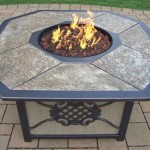What Do I Need to Build a Concrete Patio?
Constructing a concrete patio is a significant undertaking that can enhance outdoor living spaces and increase property value. However, a successful concrete patio project necessitates careful planning, the right tools, and a thorough understanding of materials. This article details the essential requirements for building a concrete patio, covering everything from site preparation to finishing and curing.
Site Preparation Essentials
Before acquiring any materials or tools, proper site preparation is crucial. This stage determines the long-term stability and aesthetic appeal of the patio. The initial step is establishing the patio's dimensions and marking the area. Stakes and string are commonly used for this purpose, ensuring the desired shape and size are accurately outlined. Once the area is marked, the next step is excavation.
Excavation depths typically range from 6 to 12 inches, depending on the local climate and soil conditions. In regions with freezing temperatures, a deeper excavation is necessary to prevent frost heave. Frost heave occurs when moisture in the soil freezes and expands, potentially cracking or lifting the concrete. The excavated soil should be removed and disposed of properly.
Following excavation, compaction is essential. A soil compactor, either a hand tamper or a plate compactor, is used to compress the soil base. Compaction provides a stable foundation for the subsequent layers. This process minimizes settling and prevents the concrete from cracking in the future.
After compaction, a layer of gravel or crushed stone is added. This layer, typically 4 to 6 inches thick, serves as a drainage layer. It allows water to drain away from the concrete slab, preventing moisture buildup and potential damage. The gravel should be evenly distributed and compacted to ensure a uniform surface.
A final layer of sand, approximately 1 inch thick, is often spread over the gravel. This sand layer provides a smooth surface for the concrete to be poured. It also helps to prevent the gravel from puncturing the vapor barrier, which is the next essential component.
A vapor barrier, typically a 6-mil polyethylene plastic sheet, is laid over the sand. This barrier prevents moisture from migrating up through the soil and into the concrete. Moisture can weaken the concrete and cause it to crack or discolor. The vapor barrier should extend slightly beyond the edges of the planned patio to ensure complete coverage. Overlap the seams of the vapor barrier by at least 6 inches and tape them securely to prevent moisture penetration.
Concrete and Reinforcements: Material Requirements
The concrete itself is, obviously, a primary requirement. The amount of concrete needed depends directly on the patio's dimensions and the desired thickness of the slab. It is crucial to accurately calculate the volume of concrete required to avoid shortages or excess material. Concrete is typically measured in cubic yards.
The concrete mix design is a critical consideration. A standard concrete mix for patios typically has a compressive strength of 3000 to 4000 psi (pounds per square inch). The mix should contain the appropriate ratio of cement, sand, gravel, and water. Ready-mix concrete is a convenient option, as it is delivered pre-mixed and ready to pour. Alternatively, concrete can be mixed on-site using a concrete mixer. The latter option requires careful measurement and mixing of the individual components.
Reinforcement is essential to strengthen the concrete and prevent cracking. Two common types of reinforcement are wire mesh and rebar (reinforcing bars). Wire mesh, typically 6x6-inch or 4x4-inch, is a grid of welded steel wires. It is placed within the concrete slab to distribute stress and prevent cracking. Rebar, on the other hand, are steel bars placed within the concrete to provide additional strength and support. Rebar is particularly useful in areas with heavy loads or poor soil conditions. The choice between wire mesh and rebar depends on the specific requirements of the project.
Forms are necessary to contain the concrete during pouring and curing. These forms are typically made of wood, such as 2x4s or 2x6s, and are placed around the perimeter of the patio area. The forms should be securely staked in place to prevent them from shifting or collapsing under the weight of the concrete. The top of the forms should be level to ensure a uniform concrete thickness. Flexible forms can be used for curved patios.
Expansion joints are critical to allow for concrete expansion and contraction due to temperature changes. These joints are typically made of flexible material, such as asphalt-impregnated fiberboard or preformed plastic strips. Expansion joints should be placed at regular intervals, typically every 10 to 15 feet, and along any existing structures, such as house foundations or sidewalks. Properly installed expansion joints prevent the concrete from cracking due to thermal stress.
Tools and Equipment for Concrete Patio Construction
Several tools and equipment are necessary for constructing a concrete patio, starting with measuring and layout tools. A measuring tape is indispensable for accurately determining the patio's dimensions. A level is essential for ensuring the forms are level and the concrete surface is even. A square is used to ensure corners are square and the patio is properly aligned. A transit or laser level can be helpful for larger projects or those with complex grading requirements.
For mixing the concrete, a concrete mixer is required if the concrete is not being delivered ready-mix. Concrete mixers come in various sizes, from small portable mixers to larger towable mixers. The size of the mixer should be appropriate for the amount of concrete required for the project. Shovels and rakes are used for moving and distributing the concrete. Wheelbarrows are essential for transporting the concrete from the mixer or delivery truck to the pouring area.
Concrete finishing tools are crucial for creating a smooth and durable surface. A screed is used to level the concrete surface immediately after pouring. It is typically a long, straight board that is pulled across the tops of the forms to remove excess concrete and create a level surface. A float is used to smooth the concrete surface and embed aggregate particles. Floats come in various materials, such as wood, magnesium, and resin. The choice of float depends on the desired finish. A trowel is used to create a smooth, hard surface. Trowels come in various sizes and shapes, with rounded trowels used for edging and corners and larger trowels used for flat surfaces.
Edging tools are used to create rounded or beveled edges along the perimeter of the patio. This prevents the edges from chipping or cracking. Groovers are used to create control joints in the concrete surface. Control joints are shallow grooves that guide cracking and prevent random cracking across the patio. Texturing tools can be used to create a decorative finish on the concrete surface. These tools include stamps, rollers, and brushes, and they can be used to create a variety of patterns and textures.
Safety equipment is of paramount importance. Safety glasses are required to protect the eyes from dust and debris. Work gloves protect the hands from abrasion and chemicals. Knee pads provide cushioning and support while working on the ground. Steel-toed boots protect the feet from injury. A dust mask or respirator is recommended when working with dry concrete mix or cutting concrete. Ear protection is advisable when using power tools, such as concrete mixers or compactors. High-visibility clothing is recommended when working near traffic or in low-light conditions.
Beyond these essential tools, consider the need for a power washer for cleaning the surface before sealing. A concrete sealer applicator is needed to apply sealant evenly across the patio. A hand tamper or plate compactor for soil preparation and aggregate compaction is also necessary.

How Do You Build A Concrete Patio

Quikrete Building A Concrete Patio

Diy Concrete Patio In 8 Easy Steps How To Pour A Cement Slab

How To Plan Pour Your Diy Concrete Patio Liberty Ready Mix

How To Pour A Concrete Patio Quick

Quikrete Building A Concrete Patio

How To Prep Form Pour A Concrete Slab For Beginners Start Finish

Diy Concrete Patio How To Pour Your Own Slab Bn S

How To Pour A Concrete Slab Diy Family Handyman

Building A Patio Landscaping Network








